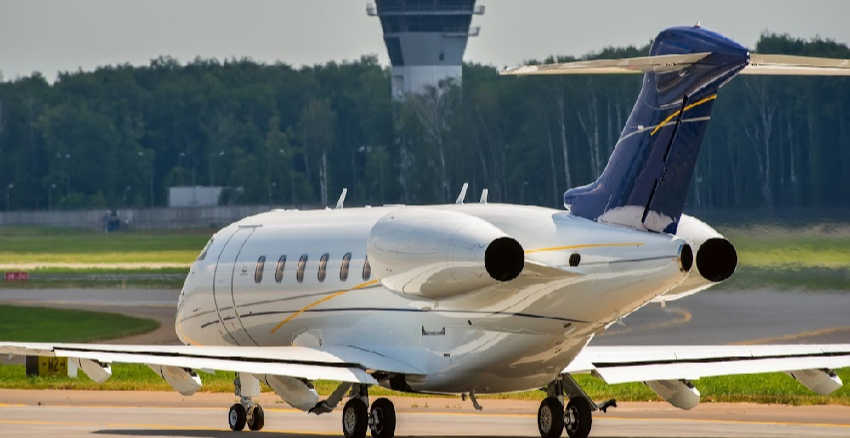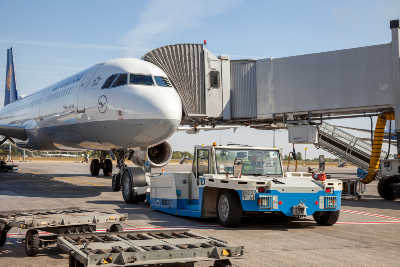For local resources,
choose a city page in Oklahoma:

Aircraft Dispatcher Jobs in Oklahoma
An aircraft flight dispatcher in Oklahoma always supports the process of moving aircraft safely from one place to another. They do it by being a big part of flights, flight planning, and deciding flight paths. By considering specific aircraft specs including an aircraft's expected performance based on its load, the Aircraft Flight Dispatcher also considers the prevailing winds and brewing thunderstorms and approaching turbulence, but that's not all. Airline Flight Dispatchers also consider the local airspace restrictions and ever-changing weather conditions - so many factors to consider.
"An Aircraft Flight Dispatcher also goes by the title Aircraft Dispatcher, Airline Flight Dispatcher, Flight Follower, Flight Dispatcher, and Flight Operations Officer." Ashley Smith, ASO CEO
As we look into the next 10 to 20 years the job prospects for Aircraft Flight Dispatchers in Oklahoma are very encouraging, especially for aircraft dispatchers and Flight Operations Officer jobs in Oklahoma. There is a high demand for flight followers everywhere, including Oklahoma.

To submit an application to earn an FAA Aircraft Dispatcher Certification, a student prospect must prove he/she is at least 23 years of age and can read and speak English.
Moreover, Flight dispatcher job-hunters from Oklahoma must amass 200+ hours of dispatcher training. Then, flight follower students from Oklahoma must pass a written test, a flight planning test, and an oral exam before landing a top aircraft dispatcher job in Oklahoma.
An Aircraft Flight Dispatcher from Oklahoma are responsible for maintaining a continual watchful eye on all flights dispatched, and is responsible in a joint agreement with the pilots for flight planning, en routes, altitude choice, fuel load requirement, and compliance with FAA regulations.
The annual median aircraft dispatcher wage hovers around $34,000. However, the Airline Dispatcher Federation believes the average airline flight dispatcher salary in Oklahoma is well over $40K.
What is the main difference between an Aircraft Dispatcher job in Oklahoma and an Airline Traffic Controller job in Oklahoma? Airline Flight Dispatchers consider an aircraft's size, local weather, estimated travel time per weather conditions, and all things pertaining to the timing of inbound arrivals and outbound flight departures. On the other hand, air traffic controllers at the airport where they direct aircraft traffic on the ground and updating pilots with new information during their flights.
Flight Dispatcher Job Description in Oklahoma
Airlines are in the people transport business where they move tons of air travelers from one place to another. It should be obvious that no airport, especially the big airports would be able to function without the oversight and management of aviation professionals on the ground - we call them Flight Operations Officer and they perform the job of Aircraft Flight Dispatcher in Oklahoma.
"FAR 121.533 declares aircraft captain and flight dispatchers are equally responsible for the safety of the flight and the welfare of the passengers and flight crew." Ashley Smith, ASO CEO
In conjunction with the pilot, the Flight Operations Officer provides the flight plan so the airplanes and helicopters from Oklahoma arrive at their destinations and on time and on schedule at the lowest possible cost.
Those performing the job of Airline Flight Dispatcher in Oklahoma recognizes the weather, the wind, and always looking for and identifying alternate destinations. Of course, if they are considering alternative destinations they also must consider the fuel required to get there. In order for any flight to take flight, the pilot needs the signature of the official flight dispatcher releasing the aircraft and the pilot for flight.
FAA - A History of Fixed Wing Structures Info for Oklahoma
There are five major stresses to which all aircraft are subjected: Bending. Bending stress is a combination of compression and tension. The rod in Figure 1-14E has been shortened (compressed) on the inside of the bend and stretched on the outside of the bend. A single member of the structure may be subjected to a combination of stresses. In most cases, the structural members are designed to carry end loads rather than side loads. They are designed to be subjected to tension or compression rather than bending.
Aviation Facts - High-Speed Aerodynamics
Listed below are a range of conditions that are encountered by aircraft as their designed speed increases. Subsonic conditions occur for Mach numbers less than one (100–350 mph). For the lowest subsonic conditions, compressibility can be ignored. As the speed of the object approaches the speed of sound, the flight Mach number is nearly equal to one, M = 1 (350–760 mph), and the flow is said to be transonic. At some locations on the object, the local speed of air exceeds the speed of sound. Compressibility effects are most important in transonic flows and lead to the early belief in a sound barrier. Flight faster than sound was thought to be impossible. In fact, the sound barrier was only an increase in the drag near sonic conditions because of compressibility effects. Because of the high drag associated with compressibility effects, aircraft are not operated in cruise conditions near Mach 1. Supersonic conditions occur for numbers greater than Mach 1, but less than Mach 3 (760–2,280mph). Compressibility effects of gas are important in the design of supersonic aircraft because of the shockwaves that are generated by the surface of the object. For high supersonic speeds, between Mach 3 and Mach 5 (2,280–3,600 mph), aerodynamic heating becomes a very important factor in aircraft design. For speeds greater than Mach 5, the flow is said to be hypersonic. At these speeds, some of the energy of the object now goes into exciting the chemical bonds which hold together the nitrogen and oxygen molecules of the air. At hypersonic speeds, the chemistry of the air must be considered when determining forces on the object. When the space shuttle re-enters the atmosphere at high hypersonic speeds, close to Mach 25, the heated air becomes an ionized plasma of gas, and the spacecraft must be insulated ted from the extremely high temperatures.


